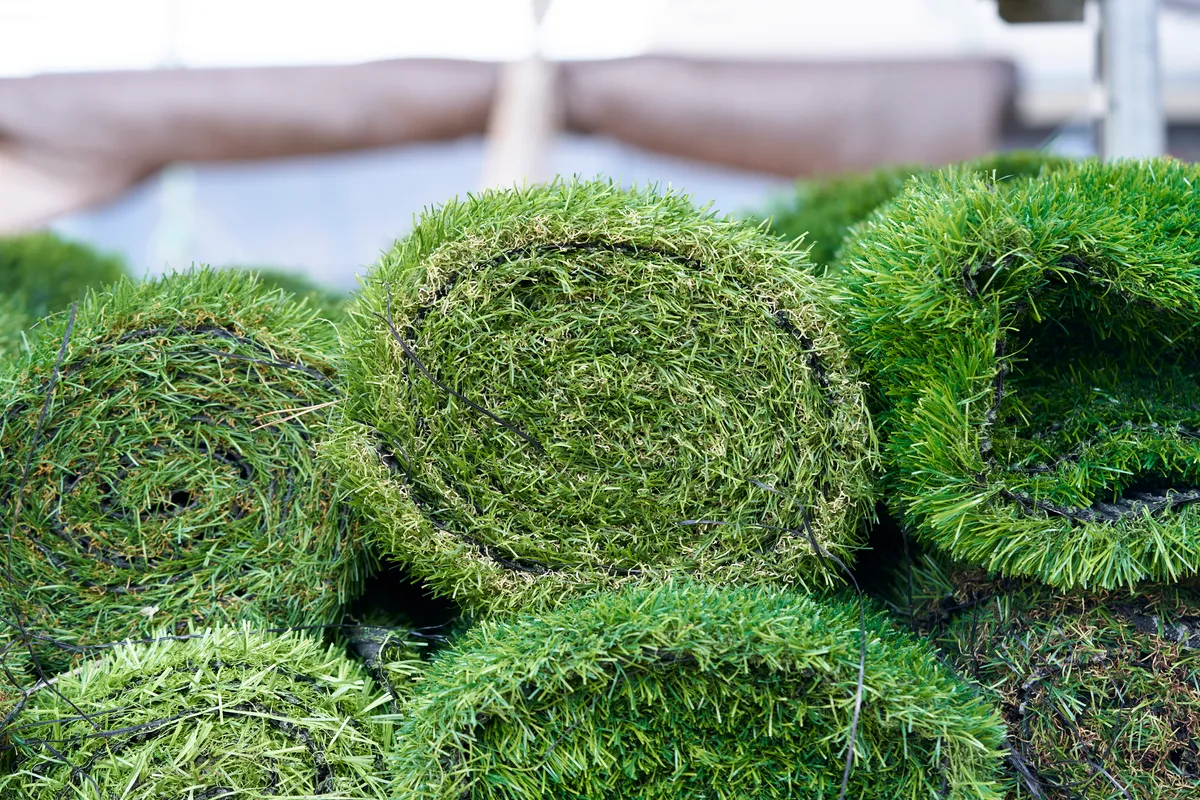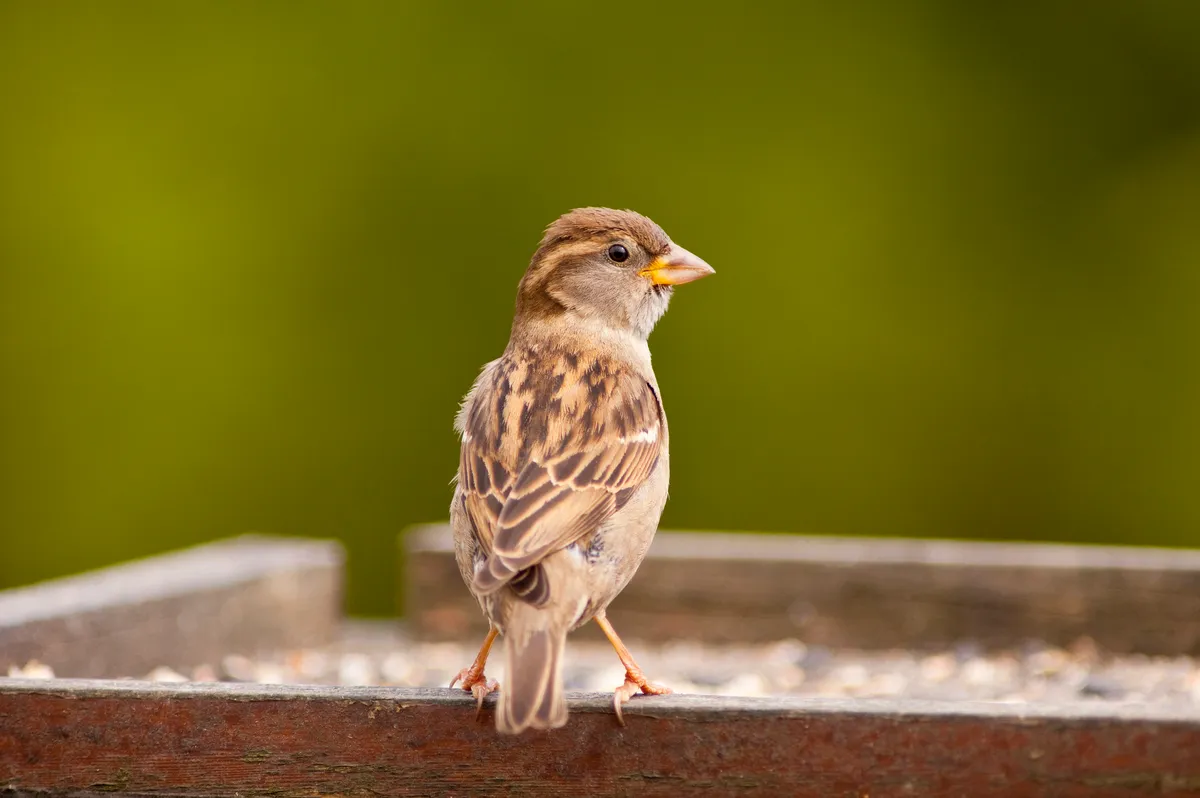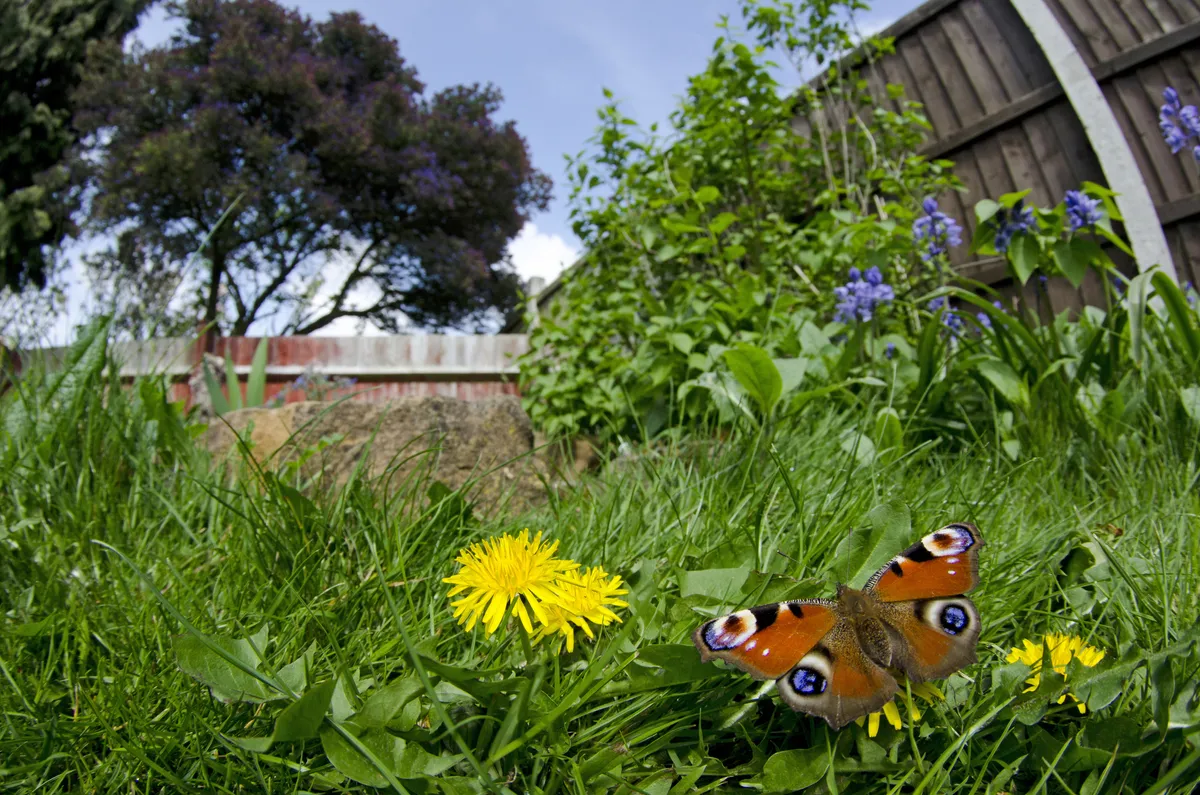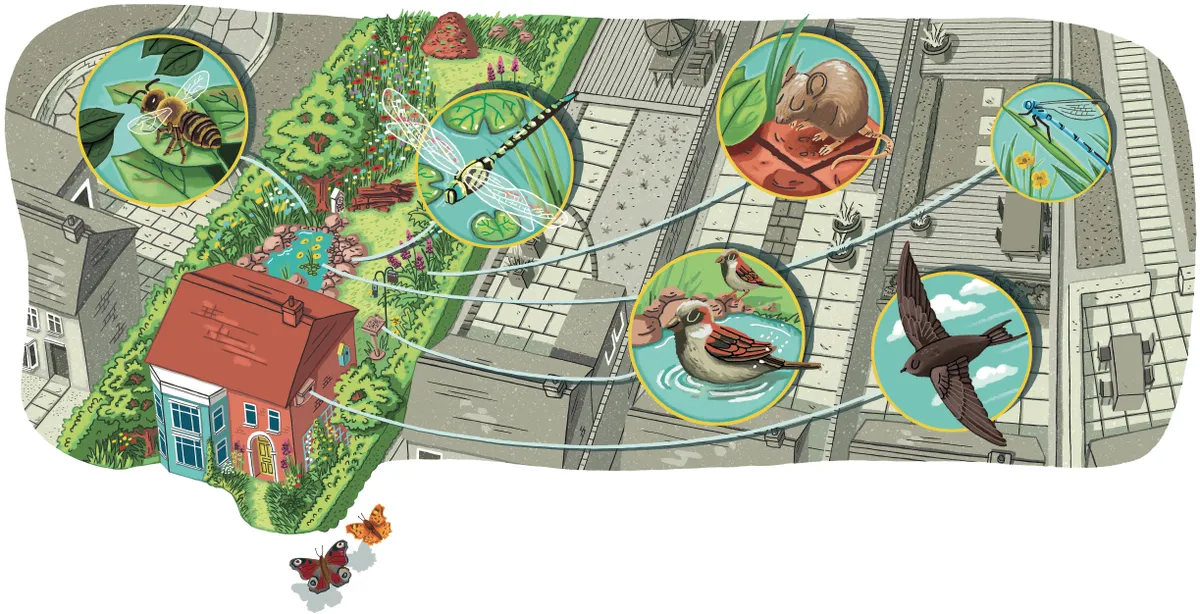Not long ago I turned an unloved Brighton courtyard into a thriving wildlife oasis. Before I took the decking up there was virtually no wildlife at all – there was neither food nor shelter in this barren artificial landscape.
But within just two months of ‘unbuttoning the earth’, digging a pond, laying a lawn and planting native shrubs, I had breeding leafcutter bees, damselflies and dragonflies, several species of butterfly and a small colony of 30 house sparrows, which would take it in turns to bathe in my pond.
It might not seem such a huge deal, but it was – especially as so many of my neighbours were busy paving, decking and fake-turfing their gardens. I created a habitat where there hadn’t been one for around 30 years. And the wildlife moved in straight away.
Where are gardens disappearing?
Sadly, my story is an unusual one. Around the country, which often likes to style itself as a ‘nation of gardeners’, our gardens are fast disappearing. In a report published in 2016, the Royal Horticultural Society (RHS) said the percentage of front gardens lost to paving, concrete or gravel had risen to 24 per cent, up from just 8 per cent in 2005. The results, based on a poll of 1,500 people, suggested that more than 4.5 million of Britain’s front gardens were entirely paved, while 7.2 million were mostly paved.
Another grim report, published by London Wildlife Trust in 2011, compared aerial surveys of London taken in 1998 and 2006. It found that domestic gardens (both front and back) made up nearly 24 per cent of the London’s total area, but that in those eight years nearly two thirds of its front gardens had been covered with hard surfaces, while the amount of green space in back gardens had shrunk, due to garden offices.
“An area of vegetated garden equivalent to 21 times the size of Hyde Park was lost between 1998 and 2006,” said report author Chloe Smith. That’s an average of two Hyde Parks per year (and a further 14 since 2011).
The tragic loss of gardens is more prevalent in urban areas, where space is at more of a premium. Front gardens are paved to park cars, a trend partly driven by on-street parking charges, while back gardens are lost to anything from garden offices to low-maintenance paving, decking and fake lawns. One plastic-grass company told me they’re seeing 10 to 15 per cent growth year-on-year. That’s 10–15 per cent fewer lawns per year, and 10–15 per cent less food for birds and wildlife.

By opting for the kind of easy ‘outdoor rooms’ depicted in glossy photo shoots rather than lush green spaces, we’re turning our urban gardens from green to grey. Some are being lost completely – for example, when a decent-sized house and garden is grabbed by developers, who then knock the home down to use the site as ‘brownfield’ for several new houses or even a block of flats.
Taken together, Britain’s gardens take up more land than its nature reserves. We’re treating them as anything but.
What is the effect of fewer gardens?
This loss of gardens is catastrophic for wildlife. The paving over of one garden may be of no significance in the greater scheme of things, but the cumulative loss of a street’s worth of gardens puts wildlife at risk. While no research has been specifically conducted in this area, we know that gardens – comprising a lawn, shrubs and flowering plants – provide crucial food and shelter for wildlife. We also know that paving stones, decking and fake turf offer very little by comparison.
We know, too, that hedgehogs have declined by 50 per cent since the turn of the century, that butterflies are vanishing from towns and cities faster than the countryside, and that house sparrows suffer greater losses in urban areas. Covering roughly the same period in which Chloe Smith noted the huge loss of London gardens, another survey, this time by the British Trust for Ornithology (BTO), found that the capital’s house sparrow population fell by 60 per cent between 1994 and 2004.

And yet, it’s almost accepted as the new normal. Since writing my book, The Bumblebee Flies Anyway, people have asked me: “Why don’t you live in the countryside?”, as if, as a nature lover, I should just accept that our towns and cities are a lost cause for wildlife. My response is always a slightly blunt: “Why should I?”
Why shouldn’t we have wildlife in our cities? It sets a dangerous precedent when so many of us are happy to accept that we’ve made our cities so unwelcoming to wildlife, that it’s assumed a nature lover would want to move to the countryside.

It would follow that it’s acceptable that children growing up in the countryside have wilder childhoods than those in urban areas. That those in the countryside have more access to green space and its many interlinked benefits.
More people live in cities and their suburbs, and therefore more city dwellers vote in general elections. Accepting a dearth of wildlife in towns and cities isn’t just depressing: it would have far-reaching consequences. Those who simply do not know the benefits of the natural world will never fight (or vote) to save it.
What are the benefits of gardens?
Also, it’s not just wildlife that benefits from gardens. RHS research found that plants help mitigate the effects of climate change. Their roots absorb water, helping to prevent flooding and soil erosion. Their branches knit together to help reduce the velocity of winds and their leaves lower temperatures through respiration and by providing shade. I can’t help but wonder if that many Hyde Parks’ worth of gardens hadn’t been lost since 1996, would London have been so hot in the heatwave in summer?
“Gardens play a crucial role in urban and suburban areas,” says Helen Bostock, senior horticultural advisor at the RHS. “And they will become even more important as our climate changes. But we know that more than five million front gardens have no plants at all – which is bad news for wildlife and the environment in general.”
Green space boosts our mental and physical well-being, too. Numerous peer-reviewed studies have shown that spending time outdoors – doing physical exercise, connecting with nature or nurturing plants – improves mental health and lowers stress. It can combat high blood pressure, as well as improve overall fitness. If there’s a single reason not to have a garden (and, importantly, a garden for wildlife), I haven’t found it yet.

More than ever, we need gardens in our towns and cities, yet overwhelmingly we’re getting rid of them. What’s more, as our population increases, new-build developments bring our cities butting up against the countryside, chipping away at greenbelt, woodland and those little anonymous patches of ‘edgeland’ where we can walk, relax and play.
By 2050, according to UN estimates, 66 per cent of the world population will be urban. If we accept that the town mouse is less abundant than the country mouse, then surely we’re accepting further, dramatic losses to our wildlife populations?
How to make a garden more wildlife friendly
I’m all too aware that I’m writing this feature for a wildlife magazine, and that you, dear reader, probably have a lovely wildlife garden. And yet some nature lovers do see the natural world as something other than what’s outside their back door. Perhaps there’s room for improvement in your garden and you, as a nature lover, are best placed to make changes.
As a nation we need to accept, indeed welcome, wildlife back into our homes and gardens. We need to relish bats in the roof, and sparrows, starlings and swifts under the eaves. That starts with me and you. What could you do at home to help wildlife? And, more importantly, how can you inspire your neighbours?

Paved gardens don’t have to be a wildlife desert. Recently I judged the Wildlife Gardening category as part of ‘Brighton and Hove in Bloom’. One garden I rated as being among the best for wildlife was actually paved at the front. But you could barely tell it was paved as it was so crammed with pots and water features that it looked like a regular garden. The owners proudly told me where the hedgehogs sleep, tucked just under a large pot of lavender. “It’s the perfect place for them to rest during the day,” they told me.
Outside the nature-lovers’ ‘wildlife bubble’, among the wider public, there are more signs of hope. The Hedgehog Street campaign, launched in 2011, has so far inspired more than 50,000 ‘Hedgehog Champions’ to open up their gardens for hedgehogs. The campaign encourages people to talk to their neighbours. You need only one enthusiastic hedgehog fan on a street and, with some gentle encouragement and education, everyone is creating holes in or beneath their fences so hedgehogs can go between gardens.

Focusing on creating habitats for one species has knock-on benefits for others, too. And, if you’re dedicated to creating homes for wildlife in your garden, then you’re more likely to be connected with it and less likely to lay paving stones, decking or fake turf.
Can new housing be wildlife-friendly?
The vast amount of new housing Britain needs doesn’t have to be disastrous for wildlife. The RSPB, Barratt Homes and Aylesbury Vale District Council have been collaborating on a nature-friendly housing project at Kingsbrook in Buckinghamshire. When complete, it will consist of three new villages built on former farmland, containing nearly 2,500 homes. Its aim is to be nothing less than the benchmark for wildlife-friendly new-build housing.
The homes feature swift and bat boxes, gardens are being planted with fruit trees and garden fences will have holes for hedgehogs and other wildlife to travel through. Outside the gardens, public areas in the development will ultimately be 60 per cent green space – orchards, wildflower meadows, newt ponds and tree-lined avenues. There will be nestboxes for kestrels and owls.

Kingsbrook’s show gardens are planted with wildlife in mind and new homeowners are given information on wildlife gardening. Some of them chose the development specifically for its wildlife credentials, but others didn’t – what will they make of it?
“We’re hoping to inspire planners and developers – show them just how much it’s possible to incorporate in new-build developments,” says the RSPB’s Adrian Thomas, who is working with Barratt Homes on the creation of green space. “But we also want the people who come to live here to reap the benefits. We, as nature lovers, know the benefits that can come from living in such a wildlife-rich place, and part of the Kingsbrook project is helping new communities get the best out of the environment around them.”
Adrian and the RSPB hope that Kingsbrook will inspire similar new developments throughout the UK, where wildlife is considered from the start of the design process. One promising sign is that Barratt Homes has invested in a new design of swift brick, which is cheap to manufacture and quick and easy for any bricklayer to install without complicated modifications. Will other building developers follow suit?
Thousands of people have signed up to the Greening Grey Britain campaign run by the RHS – each one pledging to reinvigorate their front garden by planting anything from a windowbox to a tree, shrub or climber. The idea is to completely green the grey. As the campaign grows, so will the gardens. And so, hopefully, will the wildlife.
I no longer live in the flat with the garden that inspired my book. I sold it to a woman who feeds the sparrows and grows plants out the front. She emails me, telling me about the wildlife and that makes me happy. I moved into a house with a bigger garden, where I have hedgehogs coming in regularly and have encouraged five neighbours to create a hedgehog highway.
What seems like the entire frog population of Brighton breeds in the pond each year and I’m hopeful that some of the local toads start breeding here, too.
I have a thriving population of house sparrows, starlings and goldfinches, which love my wildflower meadow. I love it here - it’s a little patch of wilderness right in the city.
We all need to do a bit more, talk a bit more, enthuse a bit more. Our wildlife needs us.